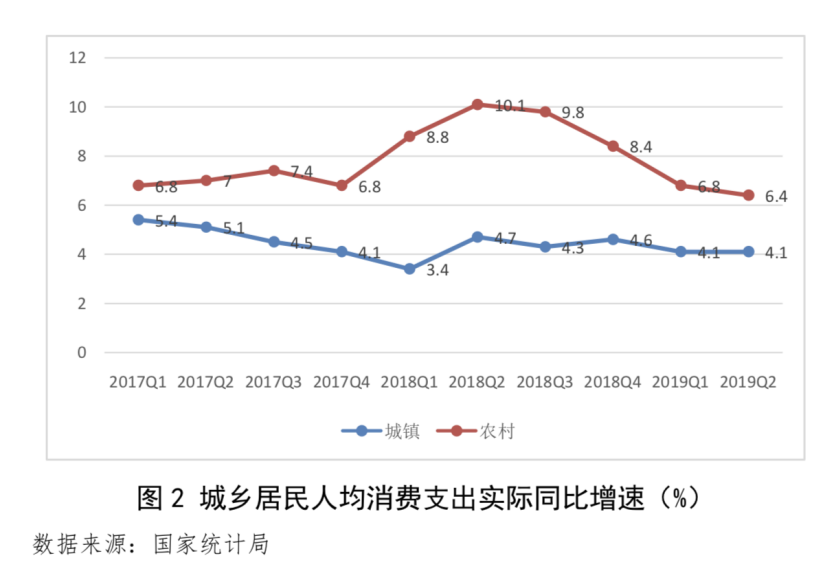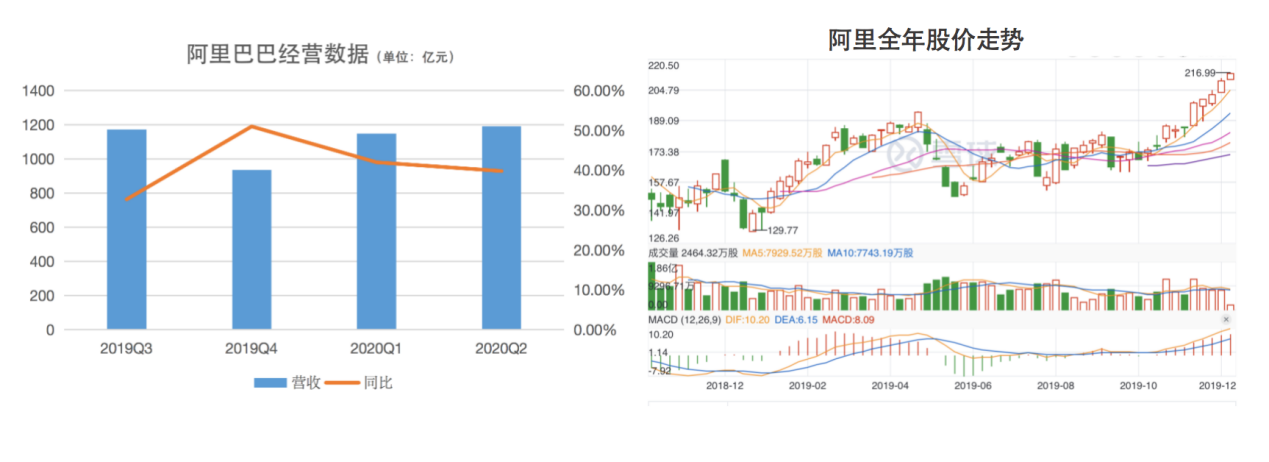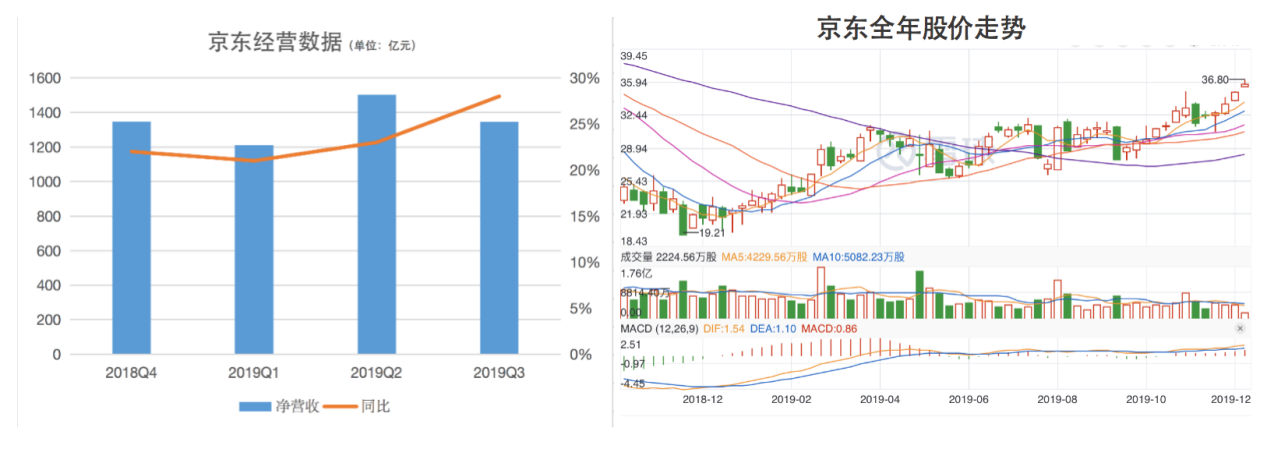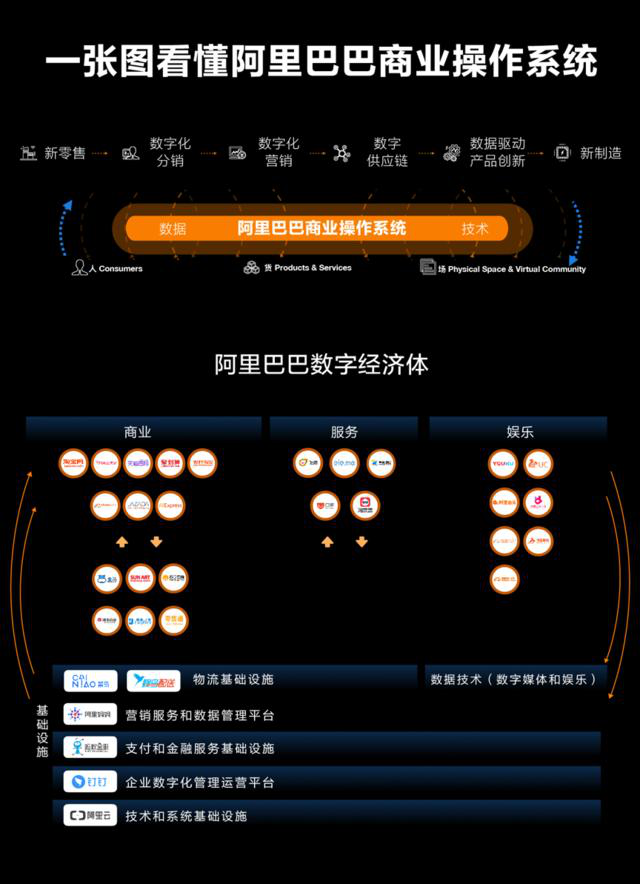This year, more attention was paid to the “tactics of sinking the market”, but the strategy of “complex business systems” was neglected.
When business returns to business, e-commerce has become an important driving force for the overall economic growth. Instead of focusing only on the number of users, traffic, customer unit price, GMV, but more on the precise matching of brand merchants and user needs.
Editor’s note: This article is from WeChat public account “Financial Report Watching Company” (ID: caibaokancompanies2018), which is reproduced with permission.

In the past year, people have paid more attention to the “tactics of sinking the market”, but neglected the strategic exploration of “complex business systems”.
When business returns to business, e-commerce has become an important driving force for the overall economic growth. Instead of focusing only on the number of users, traffic, customer unit price, GMV, but more about brand merchants and user needs Exact match.
2019 is nearing completion. In this year’s overall economic situation, e-commerce is still well deserved to become one of the core driving forces for driving growth.
Financial reports The company that sorted out US and Hong Kong stocks found that the number of companies with rising stock prices outnumbered those with falling stocks. From the perspective of the market, as of December 24, 2019, the Nasdaq index has increased by 33.89% this year, which has repeatedly hit record highs. The Shanghai Stock Index has increased by 20.59%, and Hong Kong stocks have been affected by the external economic environment. 7.80% increase.
With the changes in global economic trends brought about by the technological revolution, the consumption wave has also ushered in changes and upgrades in 2019. The rise of new domestic products represented by Li Ning and Dabaitu, the battle for the sinking of e-commerce is huge, live broadcast With goods in full swing. Among them, the e-commerce sector showed the strong Matthew effect of Hengqiang, and its market share gradually concentrated.
Under the background that the economic growth rate of the macro environment has gradually slowed down, the headline e-commerce growth represented by Alibaba and Jingdong is still strong, and 2019 is also the year of e-commerce. Ali’s stock price rose 57.95% annually, and JD.com rose 73.14%, all outperforming the broader market.
A central word that cannot be avoided for e-commerce in 2019 is “sinking the market”. The reason is very simple. The Internet industry’s traffic bonus and user bonus have peaked. In this context, “sinking” has become an Internet company. An important source for capturing incremental traffic and seeking new market opportunities. Nearly 300 prefecture-level cities, 3,000 counties, and 40,000 towns in ChinaThere are 660,000 villages, which contains an immense amount of incremental space.

The “Sink Market Development and E-commerce Platform Value Research” released by the Ministry of Commerce Research shows that in 2018, the per capita disposable income and per capita consumption expenditure of rural residents increased by 6.6% and 8.4%, respectively, at a growth rate of It is 1 percentage point higher and 3.8 percentage points higher than that of urban residents, and the demand for consumption upgrading in the sinking market is prominent.
There is demand in the market and there is an increase in traffic. Therefore, e-commerce giants have unified their directions in 2019 and are moving towards a “sinking market.”
However, in retrospect this year, people put too much attention on the “tactics of sinking the market”, but neglected the strategic exploration of “complex business systems”. The strength of the nature of commerce is the key to making the economy more robust and social resources more efficient.
Tactical focus: the giant’s path sinking
As of the close of December 26, 2019, Alibaba’s annual stock price has increased by 57.95%, with a market value of HK $ 4.52 trillion for Hong Kong stocks and US $ 580.488 billion for US stocks.
“Sinking” runs through Alibaba’s tactical focus of attack throughout the year. At the beginning of March 2019, Ali appointed Taobao President Jiang Fan as well as Tmall, restarted the “Etiantian Sword” together, and increased investment in Taobao live broadcast. Since then, he has taken full advantage of Ali ’s “piercing” mission to sink the market. The channel position on the homepage of Taotao is getting more and more advanced. During the “618” period, the 11 major marketing platforms of Jutao were mainly cost-effective. Including its rush-purchase, daily specials, etc., it has made the “biggest” investment in history, creating a shopping carnival that accurately targets the sinking market.
In September, Ali also created a special section for the “Just-for-money”: 99 cost-effective section. After the end of it, the entire Da-Just Budget Business Unit went directly to the preparations for Double 11 and the “Tmall and Ju-fortune” combination Boxing is the double 11 play. Jiang Fan stated this in his speech on Double 11 in 2019: to use more supply to meet the demand of the sinking market, try new sales methods, and live broadcast from the original attempt to the full use of Double 11.
The effect is obvious and the market is sinking rapidly. According to data from the Trustdata mobile big data detection platform, among the more than 620 million users who participated in Double 11 in 2019, users in third-tier cities and below accounted for nearly 50%, and the total net increase of users in low-tier cities was higher than that in first- and second-tier cities , Double 11 in 2019User activity in third-tier cities and below rose by 133.6%.

After a series of business adjustments in 2019, JD.com positions itself as a “retail-based technology service company”. Liu Qiangdong also stated that technology is one of the core of JD.com in 2020, which means that JD.com’s future In addition to betting on the retail track, it will enhance its own technology output capabilities and serve the digital transformation of governments and enterprises.
Despite the strategic “technical” transformation, on the C side, JD.com, Pinduoduo, and Ali continue to rob the sinking market. This incremental cake cannot be abandoned. Liu Qiangdong once said in the 2018 earnings call: “The most important thing for Jingdong in 2019 is the continued sinking of third- and fourth-tier cities.”
During 618, JD.com launched the “LBS City Relay Race” event, covering more than 360 cities in China, mainly in the sunken market, and specially set up “Jingdong Rush Day” and launched it in the JD Rush mini program The “Factory Direct Products” channel.
In order to further explore the growth potential of the low-tier market, JD.com will upgrade the spelling business to the social e-commerce platform “Jingxi”, and formally access the WeChat first-level entrance on October 31, 2019 to connect with Tencent’s 1 billion level Of traffic. On December 19th, Jingxi announced the “Good News” for three months. Since its birth on September 19 this year, Jingxi has had an average daily order volume of more than 100 consecutive months (November 18 to December 18). Million.

Strategic upgrade: the power of business collaboration
Why 2019? Why is itright now?
E-commerce has started to go to the countryside since the 2014 Central Document No. 1 was issued. Alibaba proposed the “Thousands of counties and ten thousand villages” plan, using rural Taobao as a ground force, opening up “net goods to the countryside” and trying to achieve “agricultural products entering the city”. Jingdong subsequently proposed a 3F strategy for rural e-commerce, but these years are giants Our rural strategic development has been tepid, and the sinking market has not erupted into an astonishing potential.
What’s the reason? The previous e-commerce giants lacked the understanding of consumer consumption in the sinking market, did not have good operational grasp, and the full-chain digital system for business has not yet been perfected.
The first two questions were inspired by the emergence of Pinduoduo. Pinduoduo used the model of low price + social grouping to pry open the minds of users sinking the market. Ali and Jingdong also began to find a way that suits them. Ali’s cost-effective and Jingdong’s Jingxi are both attempts in 2019. The last question is now put, and the time is ripe for 2019.
In addition to the maturity of the core commodity side, today’s e-commerce giants are also trying to stimulate the potential of sinking the market through the efforts of the supply side + consumer side, which means that the supply chain integration capabilities, partner resources, warehousing and logistics capabilities, etc. It is an important competitive force for the next emerging market dispute.
For example, JD.com’s Jingxi has deployed 100 industrial belts across the country. Based on the industrial belts, it provides direct factory supplies, allowing factories to deliver good goods directly to customers, and reducing the links for middlemen to make a difference. Using Jingdong’s proprietary B2C model, Jingxi has established a relatively more complete quality control process to strengthen the control of goods and guarantees on user experience.
Taobao’s Tiantian Sale is also doing the same thing. The C2M (customer direct connection manufacturing) reverse customization model is to directly connect the supply source, eliminate the intermediate link premium, and stabilize the huge order volume and supply side with the e-commerce platform Negotiate prices and support quality control with rules.
After years of precipitation, Ali has accumulated a large amount of consumer preference data and strong e-commerce capabilities. Now Ali understands user preferences and needs and has established a set of commercial operating systems. This operating system refers to the integration of Ali’s digital capabilities and cloud computing services in scenarios such as shopping, entertainment, and local life services. The key lies in “outputting a set of digital capabilities rather than a single module.” It represents Alibaba. The core advantage of team operations.
 In the past, Ali ’s layout of goods, capital flow and logistics was a small piece of puzzle scattered around, and now inThe connection of cloud computing, ant financial services, rookie logistics, Alibaba Mom, Dingding and other services has formed a complete business operating system ecological diagram. Only those scattered small puzzles have really begun to rejuvenate their vitality. Multi-end linkage and common maintenance Coordinated development of Ali’s overall business.
In the past, Ali ’s layout of goods, capital flow and logistics was a small piece of puzzle scattered around, and now inThe connection of cloud computing, ant financial services, rookie logistics, Alibaba Mom, Dingding and other services has formed a complete business operating system ecological diagram. Only those scattered small puzzles have really begun to rejuvenate their vitality. Multi-end linkage and common maintenance Coordinated development of Ali’s overall business.
For example, for the low-end market, Alipay has nurtured a large number of sinking users on Taobao. Infrastructure services such as money-collection code, collection of five blessings, and transportation payment codes have penetrated most of China. Alipay’s “daily must-grab” applet has attracted a significant number of low-tier city users for Taobao. QuestMobile data shows that the number of Alipay applet users on mobile Taobao has already exceeded 100 million.
Professor Zeng Ming, chairman of the Alibaba Academic Committee and former chief of staff, said that synergy is an important source of value for competition in the next ten, twenty years, and even in the era of intelligent business. Its core value lies in breaking the scale of traditional management. uneconomic. And this mechanism of value creation must rely on socialized division of labor and cooperation, ecological development becomes inevitable, and species with a single format will be marginalized.
When business returns to business, e-commerce has become an important driving force for overall economic growth. Instead of focusing only on the number of users, traffic, customer unit price, GMV, but more on the precise matching of brand merchants and user needs.
Alibaba Group Chairman and CEO Zhang Yong said at the second Alibaba ONE Business Conference that the new era of consumption is to shift the operating model from brand and product-centric to consumer-centric.
The change behind this is that the e-commerce ecosystem has gradually penetrated into all aspects of social commerce, and it is already possible to transform the efficiency of operations from more commercial nature such as “goods, people, organizations”.
Represented by the improvement and maturity of the e-commerce business system, China’s Internet has bid farewell to the growth of the wild era, and gradually entered a state of refined operation.
This refined operation involves the linkage and connection of various business segments of the e-commerce platform itself, as well as the construction and creation of smart business for brand businesses-new products, new customers, new organizations, and the upgrade of brand businesses directly What affects is the thousands of industries in China’s retail industry, which directly reach the billion-level user group.
 In the past, Ali ’s layout of goods, capital flow and logistics was a small piece of puzzle scattered around, and now inThe connection of cloud computing, ant financial services, rookie logistics, Alibaba Mom, Dingding and other services has formed a complete business operating system ecological diagram. Only those scattered small puzzles have really begun to rejuvenate their vitality. Multi-end linkage and common maintenance Coordinated development of Ali’s overall business.
In the past, Ali ’s layout of goods, capital flow and logistics was a small piece of puzzle scattered around, and now inThe connection of cloud computing, ant financial services, rookie logistics, Alibaba Mom, Dingding and other services has formed a complete business operating system ecological diagram. Only those scattered small puzzles have really begun to rejuvenate their vitality. Multi-end linkage and common maintenance Coordinated development of Ali’s overall business.